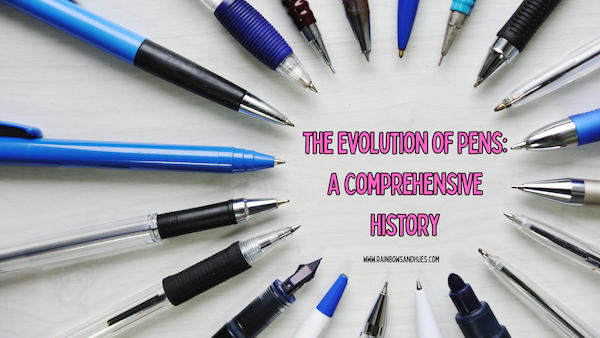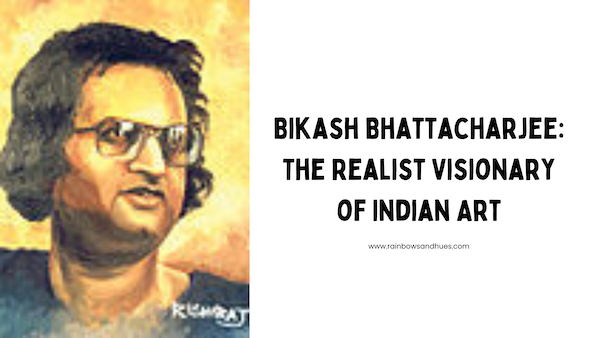The pen is an essential tool for writing and communication, and its evolution reflects the development of human civilization. From ancient reed pens to modern ballpoints and fountain pens, the history of pens is rich with innovation and cultural significance. This post explores the global and Indian evolution of pens, highlighting key inventors, important dates, and the cultural impact of this indispensable writing instrument.
Ancient Writing Instruments
Reed Pens and Quills
The earliest writing instruments date back to ancient Egypt around 3000 BCE. Egyptians used reed pens, made from the hollow stems of reeds, to write on papyrus scrolls. These pens had a slit at the end, allowing ink to flow smoothly. Reed pens were also used by the ancient Greeks and Romans.
By the 6th century CE, quill pens became popular in Europe. Quills were made from bird feathers, usually from geese or swans. The feathers were hardened, and a slit was made at the tip to hold ink. Quills remained the primary writing tool for over a thousand years.
The Invention of the Fountain Pen
Early Developments
The fountain pen, a significant milestone in the evolution of writing instruments, emerged in the 17th century. Early attempts to create a pen with a built-in ink reservoir often resulted in leaks and unreliable performance. However, the invention of the fountain pen is generally credited to Romanian inventor Petrache Poenaru. In 1827, Poenaru received a French patent for his invention, which used a quill as a nib and a barrel to hold ink.
Also Read: A Comprehensive Guide to Chalk Paints
Modern Fountain Pens
The modern fountain pen design took shape in the late 19th century. In 1884, American inventor Lewis Waterman patented a fountain pen that used capillary action to draw ink from a reservoir to the nib. Waterman’s design was reliable and leak-proof, revolutionizing the pen industry. The fountain pen became widely popular and was a preferred writing tool for many years.
The Ballpoint Pen Revolution
Invention and Development
The ballpoint pen, a major advancement in pen technology, was invented by Hungarian journalist László Bíró in the early 20th century. Frustrated with the smudging and frequent refilling of fountain pens, Bíró developed a pen with a tiny ball bearing in the tip that rotated to dispense ink. This design prevented smudging and provided a consistent flow of ink.
Bíró patented his ballpoint pen in 1938, and it quickly gained popularity during World War II. The British government acquired the rights to the pen for use by Royal Air Force pilots, who needed a reliable writing instrument that could function at high altitudes.
Commercial Success
In 1945, American entrepreneur Milton Reynolds introduced the first commercially successful ballpoint pen in the United States. The Reynolds Rocket was an instant hit, selling millions of units within a year. Subsequently, French manufacturer Marcel Bich improved the design and launched the Bic Cristal in 1950. The Bic Cristal became the world’s best-selling pen, known for its affordability and reliability.
Also Read: Incorporating Dried Flowers in Resin Art: A Guide
Gel Pens and Rollerball Pens
Gel Pens
Introduced in the 1980s, gel pens use a gel-based ink that provides smooth writing and vibrant colours. The first gel pen was created by the Sakura Color Products Corporation of Japan. Gel pens quickly became popular for their ability to produce bold, opaque lines on dark and light surfaces.
Rollerball Pens
Rollerball pens, developed in the 1960s, use water-based or gel-based ink, providing a smoother writing experience compared to ballpoint pens. The ink flows more freely, making rollerball pens suitable for detailed writing and long periods of use. Parker Pen Company and Pilot Corporation were among the early manufacturers of rollerball pens.
The Evolution of Pens in India
The evolution of pens in India is a fascinating journey that intertwines with the country’s rich history, cultural heritage, and technological advancements. From the use of ancient writing tools to the adoption and manufacturing of modern pens, India has seen significant changes in the way its people write and communicate.
Ancient Writing Instruments
In ancient India, writing was often done on palm leaves using a stylus made from bamboo or metal. This method, known as Talapatra or palm-leaf manuscripts, involved inscribing characters onto the leaves with a sharp-pointed tool. The inscribed leaves were then coated with ink or dye, making the writing visible. This technique was used for documenting religious texts, literature, and legal documents.
Another traditional writing tool was the Kalam, a pen made from a reed or bamboo. The kalam was dipped in ink and used to write on various surfaces, including birch bark and handmade paper. These instruments required skill and precision, reflecting the artistry of ancient Indian scribes.
Also Read: The Art of Rangoli: A Tapestry of History, Tradition, and Regional Splendour
The Arrival of Fountain Pens
The introduction of fountain pens to India can be traced back to the British colonial period. In the late 19th and early 20th centuries, British officials and traders brought fountain pens to India. These pens quickly gained popularity among the educated elite and professionals due to their convenience and efficiency compared to traditional writing tools.
Indian manufacturers soon began producing fountain pens locally, making them more accessible to the general population. The production of fountain pens marked a significant shift from traditional writing instruments to modern, mass-produced pens.
Key Indian Pen Manufacturers
Several Indian companies have played pivotal roles in the evolution of pens in India. Their contributions have shaped the country’s pen industry and provided affordable and high-quality writing instruments to millions of users.
- Ratnamson: Founded in the 1930s by K.V. Ratnam in Rajahmundry, Andhra Pradesh, Ratnamson is one of the oldest pen manufacturers in India. The company gained recognition for its handcrafted fountain pens, which were made from high-quality materials like ebonite and celluloid. Ratnamson pens were known for their durability and smooth writing experience.
- Deccan Pen Stores: Established in 1928 in Hyderabad, Deccan Pen Stores became renowned for its range of fountain pens. The company produced high-quality pens that catered to both students and professionals. Deccan Pen Stores played a significant role in popularizing fountain pens in southern India.
- Camlin: Camlin, founded in 1931 in Mumbai, initially started as a small business producing ink. Over time, the company expanded its product line to include fountain pens, ballpoint pens, and other stationery items. Camlin’s affordable and reliable writing instruments made it a household name in India.
- Luxor: Founded in 1963, Luxor became one of India’s leading pen manufacturers, known for its innovative designs and high-quality products. The company introduced several popular models of ballpoint pens, gel pens, and markers. Luxor’s collaboration with international brands like Parker and Pilot further enhanced its reputation.
- Cello: Established in 1995, Cello quickly rose to prominence with its range of ballpoint pens and gel pens. The company focused on producing affordable, high-performance pens that appealed to students and professionals alike. Cello’s success marked a new era in the Indian pen industry, characterized by large-scale production and widespread distribution.
Modern Developments
The Indian pen industry has continued to evolve, embracing new technologies and materials. The introduction of ballpoint pens, gel pens, and rollerball pens has diversified the market, offering users a variety of writing instruments to choose from.
Also Read: Back to School Stationery Needs: A Comprehensive Guide
- Ballpoint Pens: Ballpoint pens became widely available in India in the mid-20th century. Their affordability, convenience, and reliability made them a popular choice among students and office workers. Companies like Reynolds and Cello played significant roles in popularizing ballpoint pens in India.
- Gel Pens: Gel pens, introduced in the 1980s, offered a smoother writing experience and vibrant ink colours. These pens quickly gained popularity among students for their ability to produce bold, clear lines. Indian manufacturers like Cello and Linc began producing gel pens to meet the growing demand.
- Rollerball Pens: Rollerball pens, which use water-based or gel-based ink, provide an even smoother writing experience compared to ballpoint pens. They became popular among professionals who required high-quality writing instruments for detailed work. Brands like Parker and Pilot introduced rollerball pens to the Indian market.
Cultural Significance of Pens in India
Pens hold a special place in Indian culture and education. Receiving a pen as a gift often symbolizes the beginning of one’s academic journey or career. Pens are valuable tools for self-expression and learning, playing crucial roles in shaping individual identities and aspirations.
Mahatma Gandhi, a prominent figure in Indian history, emphasized the importance of simple tools like pens for communication and self-reliance. His use of a fountain pen while drafting important documents highlighted the pen’s role in India’s struggle for independence.
Conclusion
The evolution of pens is a testament to human ingenuity and the continuous quest for better writing tools. From ancient reed pens and quills to modern fountain pens, ballpoint pens, and gel pens, each advancement has contributed to the way we communicate and record information. Pens have transcended their functional purpose, becoming symbols of knowledge, culture, and progress across the globe and in India. As technology continues to advance, the pen remains a powerful tool for expression and creativity, connecting us to our past while writing the story of our future.
Also Read: Lippan Art: A Unique Blend of Tradition and Craftsmanship
***
Hop over to www.rainbowsandhues.com to explore exciting offers on arts & craft supplies on our website!
Follow @rainbowsandhues on Instagram to get regular information on new products and deals!




